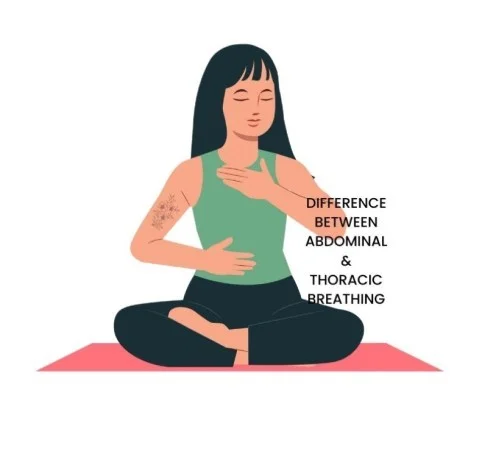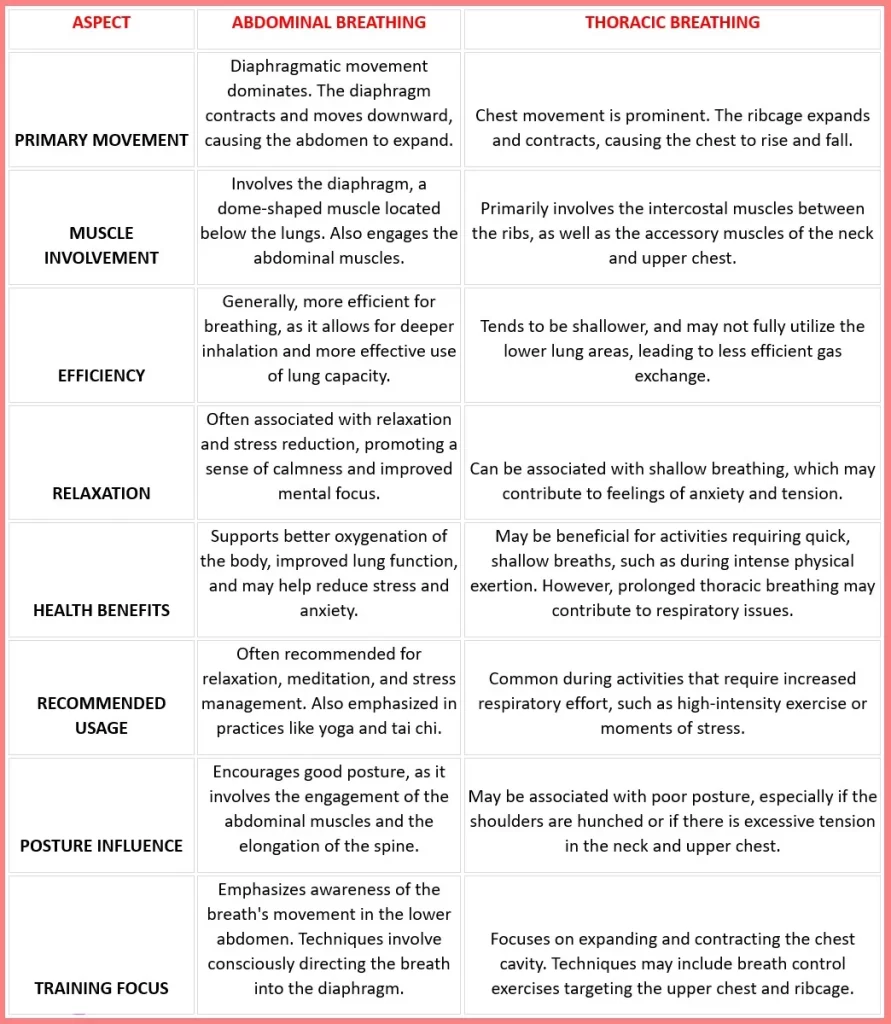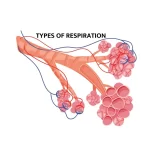Breathing, a seemingly simple act, holds nuances that can significantly impact our well-being.
Abdominal and thoracic breathing represent two distinct styles, each with its unique characteristics.
Let’s explore the differences, provide examples, delve into frequently asked questions, and uncover some interesting historical facts about these breathing techniques.

WHAT IS ABDOMINAL BREATHING?
Abdominal Breathing
Characteristics:
- Emphasis: Involves the contraction and relaxation of the diaphragm.
- Movement: Diaphragm moves downward during inhalation, allowing the abdomen to expand.
- Benefits: Efficient for complete lung expansion and optimal oxygenation.
Example: Imagine lying on your back, placing a hand on your chest and another on your abdomen.
HERE IS A DETAILED POST ON ABDOMINAL BREATHING.

As you breathe in, focus on allowing the hand on your abdomen to rise while keeping the hand on your chest relatively still.
Frequently Asked Questions:
Q: Is abdominal breathing only for relaxation?
- A: While it promotes relaxation, abdominal breathing is also essential for efficient oxygen exchange, making it beneficial in various situations.
Q: Can anyone practice abdominal breathing?
- A: Absolutely! It’s a natural and fundamental breathing pattern for humans.
Q: How does abdominal breathing benefit digestion?
- A: The movement of the diaphragm during abdominal breathing can massage the abdominal organs, aiding digestion.
Interesting Historical Fact:
- The ancient practice of pranayama in yoga, dating back over 3,000 years, emphasizes abdominal breathing as a key element for physical and mental well-being.
WHAT IS THORACIC BREATHING?
Thoracic breathing, also known as chest breathing, is a breathing pattern characterized by the predominant use of the chest and ribcage muscles during inhalation and exhalation.
In thoracic breathing, the primary focus is on the expansion and contraction of the chest cavity, involving the intercostal muscles between the ribs.
Thoracic breathing can be referred to by various synonyms or alternate terms, including:
- Chest Breathing: Emphasizes the expansion and contraction of the chest during inhalation and exhalation.
- Intercostal Breathing: Highlights the involvement of the intercostal muscles between the ribs in the breathing process.
- Costal Breathing: Refers to the movement of the ribs during inhalation and exhalation.
- Ribcage Breathing: Focuses on the expansion and contraction of the ribcage, a key aspect of thoracic breathing.
- Superior Breathing: Contrasts with abdominal breathing, as it emphasizes the upper (superior) part of the respiratory system.
These terms are often used interchangeably to describe the same fundamental breathing technique that involves the chest and ribcage, especially during situations where rapid and shallow breaths are needed.
Thoracic Breathing:
Characteristics:
- Emphasis: Focuses on the expansion and contraction of the chest and ribcage.
- Movement: Involves the elevation and depression of the ribcage during inhalation and exhalation.
- Benefits: Useful for quick, shallow breaths, such as during physical exertion.

Example: Stand upright and place your hands on your chest. Inhale deeply, allowing your chest to rise. Exhale, feeling your chest fall.
Frequently Asked Questions:
Q: When is thoracic breathing commonly used?
- A: It’s often utilized during activities that require rapid and shallow breaths, like running or lifting heavy objects.
Q: Can thoracic breathing help with anxiety?
- A: While abdominal breathing is generally more effective for relaxation, thoracic breathing can still contribute to calming the nervous system.
Q: Is thoracic breathing suitable for individuals with respiratory conditions?
- A: It may be less suitable for individuals with certain respiratory issues, as it doesn’t optimize lung capacity as effectively as abdominal breathing.
Interesting Historical Fact:
- Ancient Greek physicians, such as Hippocrates, recognized the importance of observing chest movements as an indicator of respiratory health.
Bridging the Gap:
It’s essential to note that a healthy breathing pattern often involves a combination of both abdominal and thoracic breathing.
The diaphragm and intercostal muscles work in harmony to adapt to different situations, allowing us to breathe efficiently in various circumstances.
DIFFERENCE BETWEEN ABDOMINAL AND THORACIC BREATHING














Leave a Reply